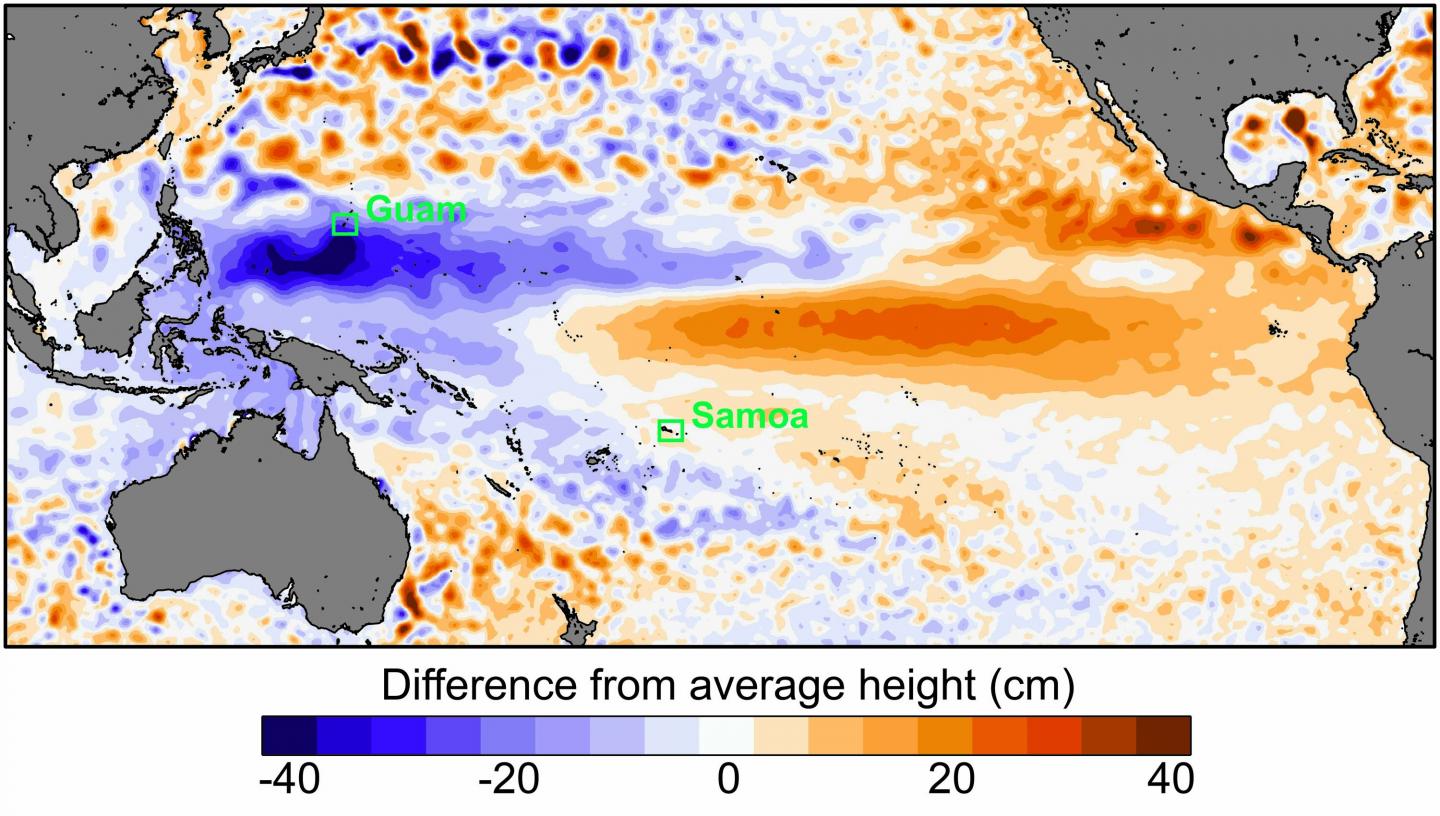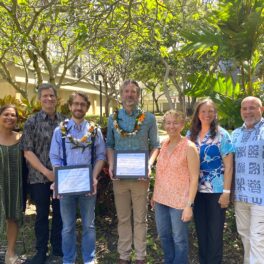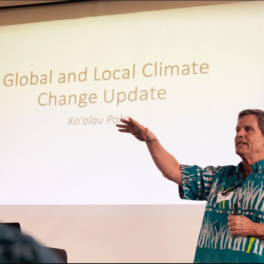Extreme Pacific sea level events to double in future
 Extreme low sea levels occurred during August in parts of the western Pacific associated with the ongoing strong El Niño. Data from AVISO satellite measurements. Image courtesy of Matthew Widlansky, IPRC.
Extreme low sea levels occurred during August in parts of the western Pacific associated with the ongoing strong El Niño. Data from AVISO satellite measurements. Image courtesy of Matthew Widlansky, IPRC.
Many tropical Pacific island nations are struggling to adapt to gradual sea level rise stemming from warming oceans and melting ice caps. Now they may also see much more frequent extreme interannual sea level swings. The culprit is a projected behavioral change of the El Niño phenomenon and its characteristic Pacific wind response, according to recent computer modeling experiments and tide-gauge analysis by scientists Matthew Widlansky and Axel Timmermann at the International Pacific Research Center (IPRC) and their colleague Wenju Cai at the Commonwealth Scientific and Industrial Research Organisation (CSIRO).
The team of scientists recently asked, how will future greenhouse warming affect the El Niño sea level seesaws? They used state-of-the-art climate models, which accounted for increasing greenhouse gas concentrations, together with simulations of the observed climate and tide-gauge records to verify the model results. They determined that projected climate change will enhance El Niño-related sea level extremes. By the end of this century the experiments show that the intensified wind impacts of strong El Niño and La Niña events are likely to double the frequency of extreme sea level occurrences, especially in the tropical southwestern Pacific.
Read more about it at Discovery News, the Christian Science Monitor, Big Island Now, and EurekAlert!



